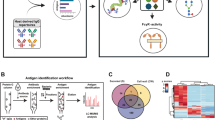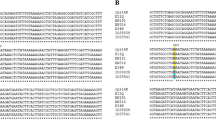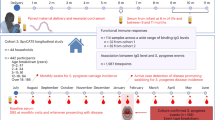Abstract
DURING a survey of agglutinating activity of human saliva against streptococci1 we found that saliva from individuals of blood group 0 agglutinated a particular strain of group G streptococci more often than did serum from those with blood group A or B. When we tested 833 sera we found a dimorphism for antibody-like substances against group G streptococci—sera could be divided into two groups according to their agglutination titre against group G streptococci. The first group had low titres, not rising above 1 : 4 and more usually 1 : 1; the second group had much higher titres ranging from 1 : 200 to 1 : 3,200. There was no overlap between the two groups of sera. We thought that this might be related to a genetic system, probably diallelic. We now report a relationship between the haptoglobin genotype of serum and the streptococcal antigens with which it reacts.
This is a preview of subscription content, access via your institution
Access options
Subscribe to this journal
Receive 51 print issues and online access
$199.00 per year
only $3.90 per issue
Buy this article
- Purchase on SpringerLink
- Instant access to full article PDF
Prices may be subject to local taxes which are calculated during checkout
Similar content being viewed by others
References
Prokop, O. & Köhler, W. Z. Immun. Forsch. 152, 362–365 (1977).
Author information
Authors and Affiliations
Rights and permissions
About this article
Cite this article
KÖHLER, W., PROKOP, O. Relationship between haptoglobin and Streptococcus pyogenes T4 antigens. Nature 271, 373 (1978). https://doi.org/10.1038/271373a0
Received:
Accepted:
Published:
Issue date:
DOI: https://doi.org/10.1038/271373a0
This article is cited by
-
Cell surface proteins of a group A streptococcus type M4: The IgA receptor and a receptor related to M proteins are coded for by closely linked genes
Molecular and General Genetics MGG (1989)
-
Release of Fc-receptors after streptococcal lysis induced by a lytic enzyme fromStreptomyces globisporus
Medical Microbiology and Immunology (1986)
-
Guanidine extraction enhances the binding of human fibrinogen to group-B streptococci
Medical Microbiology and Immunology (1984)
-
Variations in the binding of mammalian fibrinogens to streptococci of different animal origin
Medical Microbiology and Immunology (1983)
-
Hp und Hepatitis Bs-Antik�rpertr�ger
Blut (1978)



